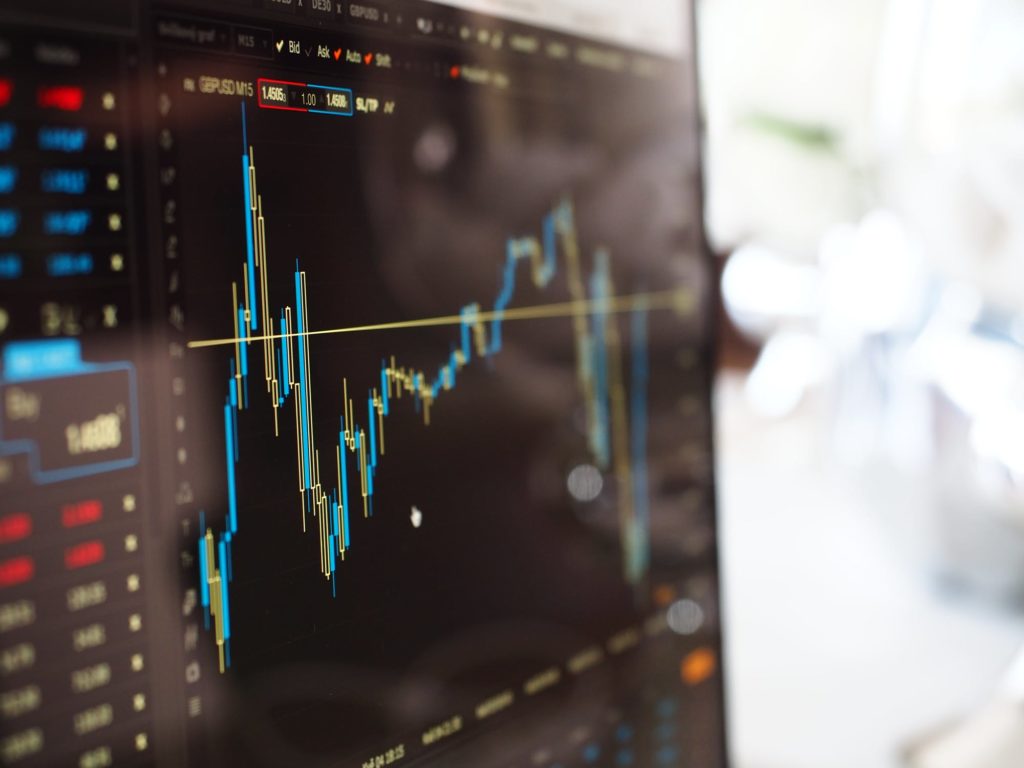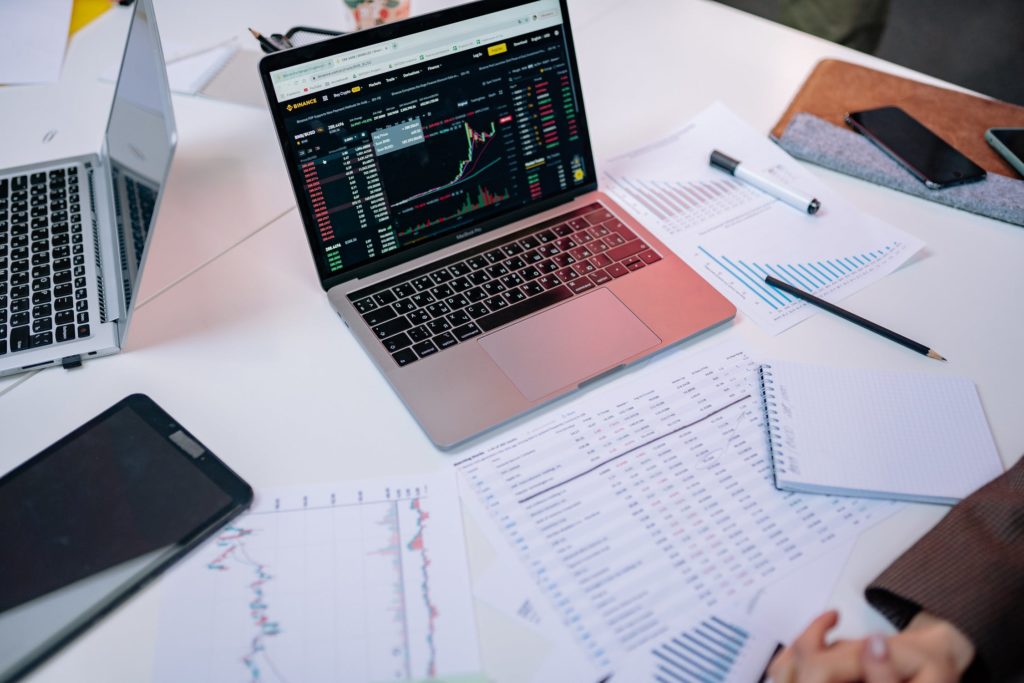If you’re looking to invest, the forex and stock markets are the place to be.
With trading volumes going into trillions of dollars, they’re among the largest and most popular markets in the world; and as world economies continue to grow, so will they.
Of course, choosing which to invest in can be a daunting task—there’s a somewhat overwhelming number of factors to consider before deciding to invest (and risk) your money.
This article is going to educate you on both markets, and make your choice easier.

What is the forex market?
The Foreign Exchange (forex or FX) market, also known as the currency market, is the collection of individuals and businesses involved in the buying and selling of currencies from around the world.
Forex trading is the largest and most liquid financial market in the world, with a trading volume of around $5 trillion every day.
The economic strength of a country, as well as a variety of other economic and political factors all affect the value of a currency, which in turn affects the stability of the forex market.
It is a volatile trading environment, with daily, and even hourly spikes and crashes in price. This makes short-term investments (such as day trading, where a trader buys and sells one or more currencies in the same day) a common choice in the forex market.
What is the stock market?
Also known as the equity market or share market, the stock market is the collection of individuals and businesses involved in the buying and selling of stocks.
A stock is a collection of shares, or other units of ownership of a business.
Trading stock means trading partial ownership of a business or group of businesses.
Stock market indexes, such as the Dow Jones Industrial Average (DJIA) and the Standard & Poor 500 (S&P 500) are used both to track the stock market, and to trade on it.
The stock market has a relatively small daily trading volume when compared to the forex market: about $200 billion when you combine all the world’s stock markets.
It is also less volatile; which means that day trading, which relies on heavy fluctuation, is usually not profitable.
Long-term investments are therefore the preferable way to trade in the stock market.
What’s the difference?
The stock and forex markets differ in a number of ways. Some, such as the assets being traded, volatility, and liquidity have already been highlighted. Here, I’ll go into more detail on those and some other differences.
1. Liquidity and trading volume
Like I said before, the stock market and the forex market have a huge difference in trading volume. While the culmination of all the world’s stock markets caps around $200 billion a day, the forex market caps at a whopping $5 trillion, 25 times the volume of the former.

Liquidity is the ease with which an asset can be bought or sold. It’s an important factor to consider, as higher liquidity leads to lower transaction costs.
Liquidity also goes hand in hand with trading volume. More traders in a market means more money, and it also means that there is a higher possibility of finding someone to trade with; which means higher liquidity.
The forex market has a higher trading volume, and is therefore more liquid than the stock market.
2. Volatility
Volatility is the measure of how likely it is for a market’s price to make major, unpredictable changes. Less volatile markets will see gradual price changes, whereas more volatile markets will see rapid price changes.
The high volume of trades happening at any give time in the forex market make it more susceptible to sudden price changes.
The high volatility of the forex market is what makes it better suited for short-term trades.
Political, social, and economic events and announcements can also lead to sudden, and often drastic price changes.
The stock market, however, is more prone to gradual changes which can be tracked and monitored over time, giving room to make more informed decisions.
It isn’t completely immune to volatility, however. Domestic politics of the country which a stock market index tracks can greatly affect its price.
The higher stability of the stock market makes it better suited for holding long term positions.
3. Commission
Commission is, simply put, the cost of a transaction. Because of low liquidity in the stock market, brokers charge a certain percentage of your capital as payment for their services.
Forex brokers, on the other hand, make their profit from the bid-ask spread (the difference between the buy and sell prices), and don’t take commissions.
4. Asset range and market availability
There are 8 major assets for a forex trader to focus on. These are called the major currencies and they account for the majority of trades in the forex market. Traders monitor the economies of the 8 countries and combine them into pairs to trade.
The stock market has thousands of assets to trade, and these assets can be monitored using an economic calendar: a chart showing forecasts for dates when economic volatility will occur.
The markets also differ in availability. Forex is decentralized, meaning it is not bound to one location or other. This means that you can trade forex 24 hours a day, 5 days a week.
Major Stock Indices, however, are not decentralized, and therefore have opening and closing times, which differ from index to index.
5. Leverage
In simple terms, trading on leverage means opening trades with less than the required capital.
When you trade on leverage, you provide a fraction of the capital required, and your broker provides the rest.
Leverage is more often associated with forex trading, but it can be used in both forex and the stock market.
However, the leverage ratio in the stock market is significantly lower than in the forex market. In the former, you can get a 2:1 or 10:1 leverage; while in the latter, you can get up to a 100:1 leverage ratio (200:1 in some countries).
Keep in mind that although trading on leverage increases your potential profit margin, it also increases the risk of loss.
How are they similar?
The forex and the stock markets, as we’ve seen, differ in their mode of operation, the hours during which they operate, their trading volume, and a whole lot of other ways. With all these differences, however, they’re also quite similar. Here are some of the ways these two markets aren’t so different.
1. They both give leverage
Though it’s to varying degrees, both the stock market and the forex market allow investors to trade on leverage.
2. They have similar terminologies
Terms used to describe ways to trade or rises and falls in price are nearly the same in both markets.
Some of these terms are:
- PIP: an acronym meaning “percentage in point”. It is the smallest possible movement in the price of an asset (a currency in forex or a share in the stock market).
- Lot size: the total amount of units of an asset purchased in a transaction. This means the number of shares bought, or the size of the position opened in USD.
- Bull market: a market with an increasing price trend. When the price of a stock or currency pair is on the rise, it is said to be “bullish” or a bull market.
- Bear market: a market with a decreasing price trend. When the price of a stock or currency pair is falling, it is said to be “bearish” or a bear market.
- Leverage: as previously explained, leverage is money borrowed from a broker within a trading account in order to open positions larger than one could normally afford.
- Margin: the doorway to leverage. It is the initial capital put into a trading position, a percentage of which is used as collateral in the event of loss.
- Bid/ask spread: bid is the lowest price a seller is willing to sell an asset; ask is the highest price a buyer is willing to buy an asset. Bid/ask spread is the difference between these two prices.
- Stop: an order to buy/sell an asset at a specific price.
- Limit: an order to buy/sell an asset at a specific price or better in the future.
- Stop-limit: an order to execute either a stop order or a limit order, depending on which way the market moves.
3. Both respond to economic, social, and political events
Though to varying degrees, both the stock market and the forex market react to domestic and international events and announcements.
4. Similar trading methods
The forex and the stock markets have different levels of centralization and times of availability. However, the ways in which they’re traded are quite similar. The stock market has become less of a physical marketplace and more digital; and therefore stock can be traded through online brokers using brokerage accounts. Forex is also traded with online accounts.
How to invest in stock
There are different ways to start investing in stock. For the purpose of this article, I’ll be explaining how to invest using an online broker in 5 steps.

Step 1: Choose a broker and an account type
There are two types of brokerage accounts; retirement accounts like IRAs, and taxable brokerage accounts. IRAs are not taxed, but there are restrictions around how much can be put in and when withdrawals can be made. Conversely, taxable accounts are less restricted, but are taxed.
You’ll also have to choose between a number of online brokers to trade with. Alternatively, you can use robo-advisors, which use complex algorithms to make and manage investments for you.
Step 2: Choose between funds and stocks
Buying mutual funds such as index funds and ETFs means buying little amounts of many different stocks in the hopes that they grow over time. A portfolio can be built by buying multiple funds over time.
It is also possible to buy individual stocks, though building a portfolio out of them is significantly more difficult.
Step 3: Set a budget
Decide how much of your income to invest, and what percentage goes to which stock or fund. It is usually considered wiser to invest more in funds than individual stocks.
Step 4: Leave it alone
It’s easy to fall into the trap of panicking or getting overexcited every time there’s a price fluctuation. However, investing is a long game, and usually, the best thing to do for your portfolio is to leave it alone.
Step 5: Management
While it’s unwise to check your portfolio every day, you’ll want to inspect it a few times a year to make sure it still aligns with your goals.
It’s during this time that you’ll want to diversify and expand your portfolio.
How to trade forex
Step 1: Open an account
The first thing you’ll want to do is open a trading account with one of the many online brokers there are. Deciding which one to go with depends on your goals.
A broker that supports leveraged accounts is required if you want to trade CFDs, a type of contract that stipulates that a buyer will pay a seller the difference between an asset’s current value and its future value at a set date.
Step 2: Create a trading plan
This involves setting up a budget, deciding ahead of time which assets to trade, which days to trade, how much of your budget can go into each trade, as well as other factors. Creating a trading plan helps prevent excessive losses by giving you an absolute set of rules to follow, thereby helping to keep emotion out of your trading decisions.
Step 3: Open a position
After opening your account and making decisions regarding your trading plan, the next thing to do is open a trading position. You’ll have to decide whether to go with a buying or selling position, and what stops & limits to place on your trade (if any). After you’re satisfied with the details, open the position.
Step 4: Monitor and close your position
Monitor your position and take note of the profit/loss it makes. If your stops aren’t triggered before you decide it’s time to close your position, then you can manually close it.
Complete these steps, and you have officially become a forex trader.
Borrowing money to trade and invest
Borrowing to trade is risky. One sudden change in the market, and you could end up with a heap of debt and no way to repay it.
However, with the right plan, you can greatly lower the risks involved in taking out a loan or trading on leverage. Here are a few tips to help you achieve that:
- Look up multiple lenders/platforms for the best loan you can find.
- Borrow less than the maximum amount the lender offers. Never get the maximum amount.
- If you’re trading on margin, limit your starting margin. If you still make profit after 2-4 months, gradually increase the margin (for example, 20:1 to 40:1 or 2:1 to 4:1).
- Have cash set aside in case of emergencies. This will prevent you from having to sell your investments.
- Pay the interest on time.
- Diversify your investments. Having a diverse portfolio will protect you when a single asset falls in value.
- Use stop-limits. Research each asset you’re trading, know their usual range, and set automatic stops a safe distance out of said range.
By following these steps, you should be able to trade relatively safely with borrowed funds.
Conclusion
The forex and stock markets are both large, liquid, and profitable.
The choice of which one to invest in depends on factors such as your income, age, personal and financial goals, investment style, and risk tolerance.
Forex trading is faster paced and more profitable in the short term, but also has higher overall risk. It’s the choice to go with if you don’t want to, or can’t afford to wait five years for your investments to yield profit.
Stock trading is less risky, but has lower short term profitability. It’s better suited for a long-term investment, and has a higher chance of paying out in the future if done right. You should trade in the stock market if you can afford to leave your funds alone and let them grow for the long term.
Of course, they can both be traded in other ways—Forex can be traded similarly to index funds using CFDs, and day traders exist in the stock market. It all comes down to your preference and your tolerance for risks.
